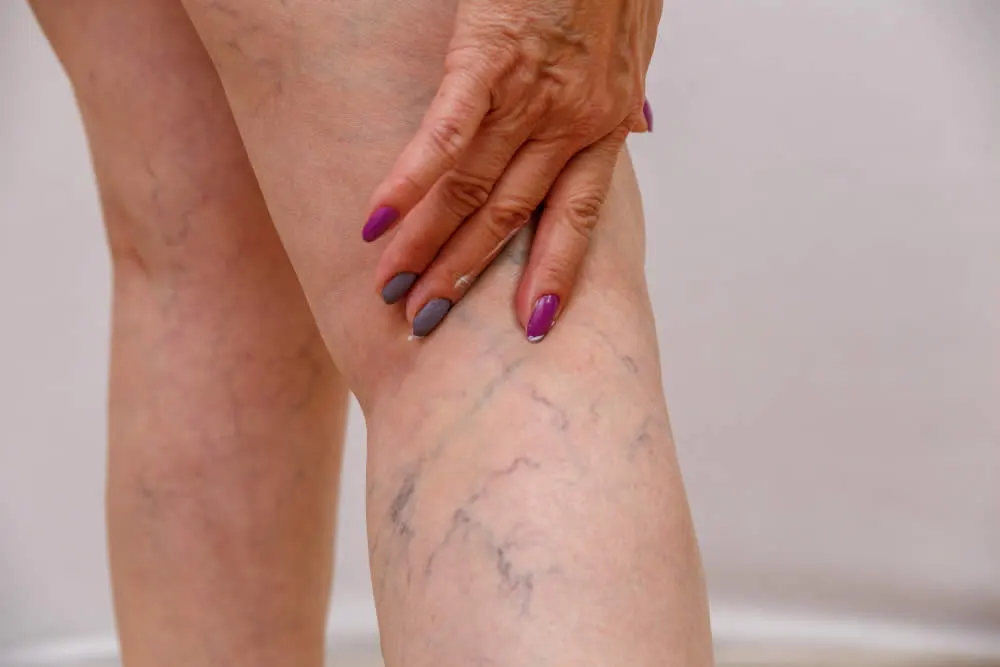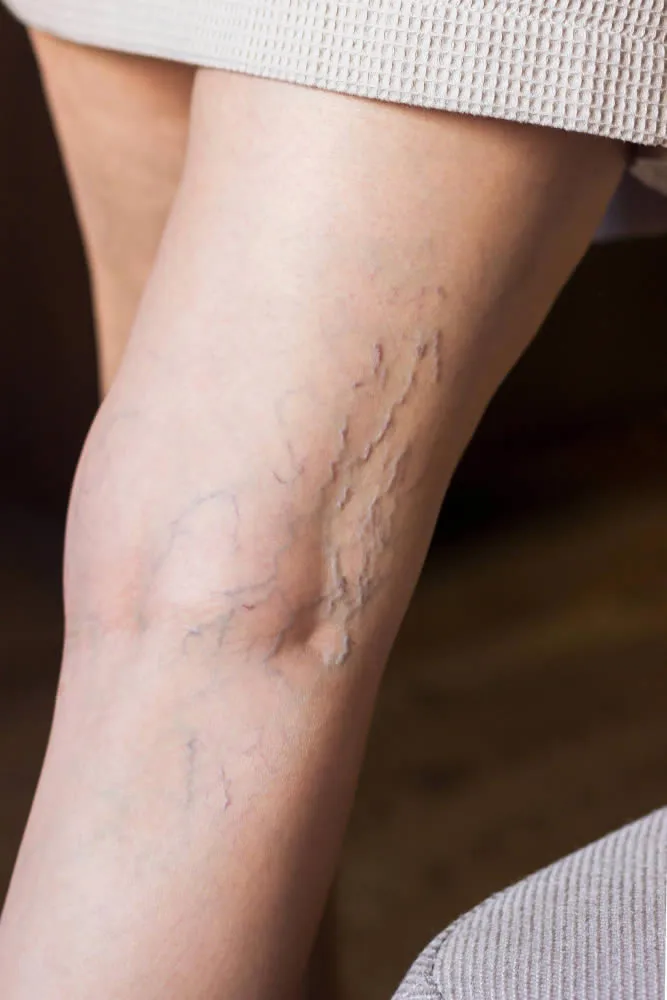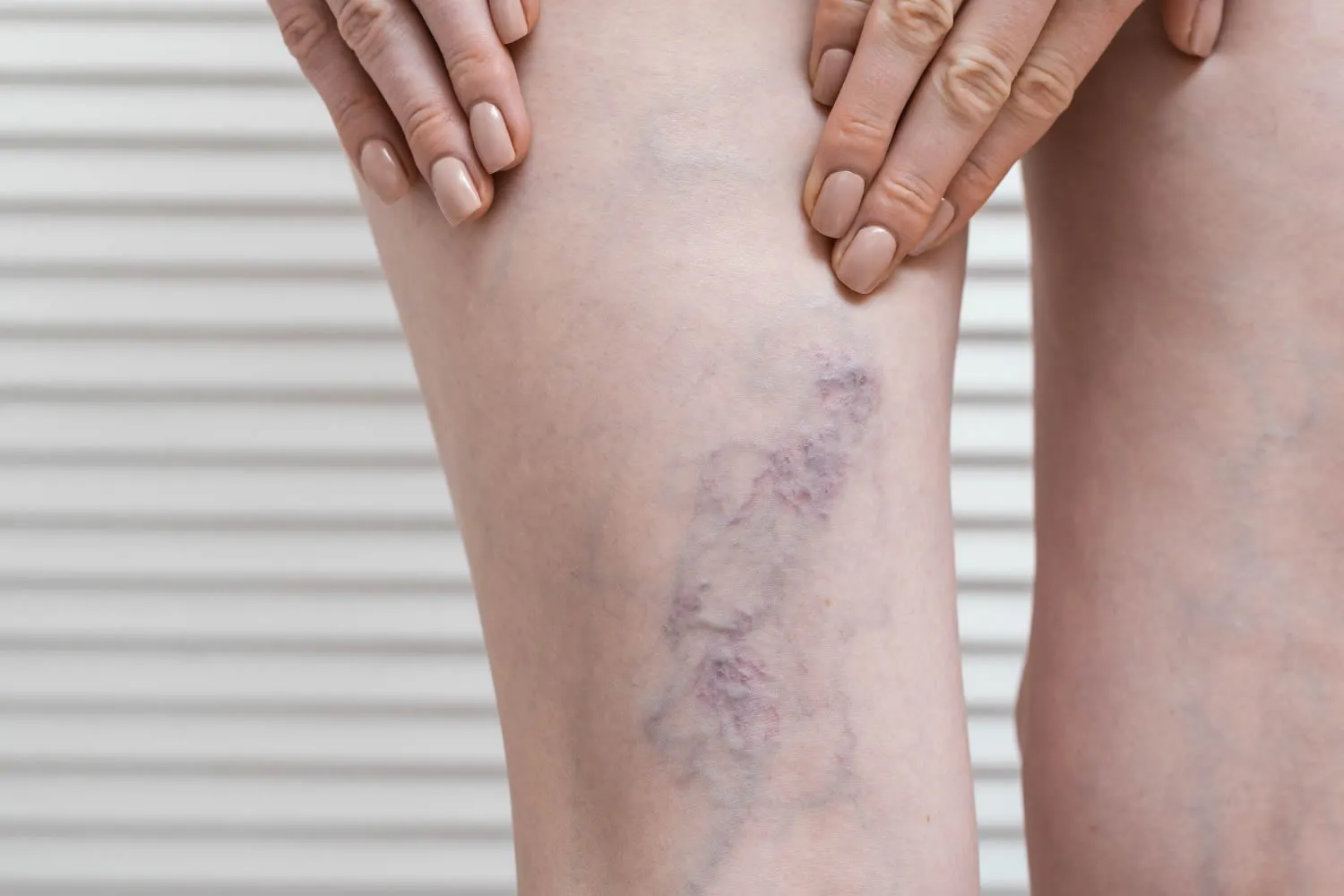What is Sclerotherapy
Sclerotherapy is a minimally invasive medical procedure aimed at treating spider veins and small varicose veins. It involves injecting a special solution into these targeted veins, causing them to collapse and eventually fade away. The procedure is effective in improving the appearance of visible veins, especially on the legs and thighs. Sclerotherapy is a straightforward outpatient treatment, often chosen for cosmetic reasons due to its low risk and relatively short recovery time. However, it may not be suitable for larger or more complex veins, which might require different interventions like laser therapy or surgery.

Why is sclerotherapy better for spider veins?
Sclerotherapy is considered a superior treatment option for spider veins due to its effectiveness and targeted approach. Spider veins are smaller, dilated blood vessels that appear close to the skin’s surface, often causing cosmetic concerns. Sclerotherapy involves injecting a specialized solution directly into these veins, causing them to shrink, collapse, and eventually be absorbed by the body. This method is particularly well-suited for spider veins because the smaller size of these vessels makes them more responsive to the treatment.
Unlike varicose veins, which are larger and may require more extensive interventions, such as surgery or laser therapy, spider veins respond well to the sclerotherapy procedure. The injected solution irritates the lining of the spider veins, leading to their closure and gradual fading from view. The procedure is minimally invasive and typically does not require anesthesia or significant recovery time.
In contrast, using sclerotherapy on larger varicose veins might not yield as effective results. The larger size and complexity of varicose veins can sometimes make them resistant to the sclerotherapy solution. Additionally, injecting the solution into larger veins could potentially lead to complications like vein thickening or clot formation.
Is Sclerotherapy Safe?
Sclerotherapy is generally considered a safe procedure for treating spider veins and small varicose veins. It has been used for many years with a high success rate and minimal complications. The procedure involves injecting a solution into the targeted veins, which causes them to close off and eventually be absorbed by the body.
While sclerotherapy is safe for most individuals, like any medical procedure, there are potential risks and side effects. The most common side effects include minor discomfort, bruising, or swelling at the injection site. These effects are usually temporary and subside on their own.
What to Avoid After Sclerotherapy
Sclerotherapy is a quick and non-invasive procedure to treat spider veins and varicose veins, requiring minimal recovery time. Following your dermatologist’s post-treatment guidelines is vital to prevent potential infections and complications.
In the initial 48 hours post-treatment, it’s advisable to refrain from:
- Using anti-inflammatory medications like aspirin or ibuprofen
- Immersing the treated area in water or applying heat
- Direct exposure to sunlight or UV light sources
You might receive a recommendation to wear compression garments for around five to seven days following sclerotherapy. Gentle movement, such as walking, aids in enhancing circulation and preventing blood clot formation. However, abstaining from strenuous exercise and vigorous activity for at least 24 hours is prudent to safeguard the treated blood vessels.
Following to your procedure, your dermatologist will provide comprehensive aftercare instructions, outlining both actions to undertake and those to avoid.
How to Help Prevent Spider Veins and Varicose Veins?
it is possible to help prevent the development or recurrence of varicose veins. Here are some tips:
- Maintain a healthy weight and avoid obesity
- Engage in regular physical activity
- Avoid prolonged periods of standing or sitting
- Wear compression stockings
- Elevate your legs whenever possible
- Avoid crossing your legs for extended periods
- Eat a healthy diet that is low in salt and high in fiber
- Stay hydrated
- Quit smoking
- Avoid wearing tight-fitting clothes or high heels
These tips can help improve blood flow, reduce pressure on the veins, and prevent or delay the development of varicose veins and spider veins. It is important to consult with our dermatologist for personalized advice and treatment recommendations.

What are some side effect of Sclerotherapy Treatment?
Sclerotherapy, while generally safe, can occasionally result in some side effects. These side effects are typically mild and temporary, but it’s important to be aware of them before undergoing the procedure. Potential side effects of sclerotherapy include:
-
Discomfort and Bruising: Mild discomfort, bruising, and swelling at the injection site are common and usually subside on their own within a few days or weeks.
-
Hyperpigmentation: The treated area might develop temporary darkening of the skin, known as hyperpigmentation. This typically fades gradually over several months.
-
Matting: Occasionally, small clusters of tiny blood vessels (telangiectatic matting) may appear near the treated area. These usually improve over time or can be managed with further treatment if necessary.
-
Allergic Reactions: While rare, some individuals may experience an allergic reaction to the sclerosing solution, which can lead to itching, rash, or localized swelling.
-
Ulceration: Extremely rare, small ulcers may form at the injection site. These typically heal without intervention.
-
Blood Clots: Though uncommon, there is a risk of blood clot formation. Adhering to post-procedure instructions, such as wearing compression garments and staying active, can help minimize this risk.
-
Infection: Infections are rare but possible. Proper post-care and keeping the treated area clean can help prevent infections.
It’s important to discuss these potential side effects with your dermatologist before undergoing sclerotherapy. DrName can provide personalized guidance based on your medical history and whether the procedure is suitable for you. While most people experience minimal side effects, being informed about possible outcomes ensures a smoother experience and recovery.
FAQ About Sclerotherapy Treatment
Is Sclerotherapy covered by insurance?
Sclerotherapy is often considered a cosmetic procedure and is therefore not always covered by insurance. However, in cases where varicose veins or spider veins cause medical problems, such as pain or swelling, insurance may cover the treatment.
Can Sclerotherapy cause blood clots?
While sclerotherapy is not typically associated with blood clots, any medical procedure carries some risk. Your doctor will evaluate your medical history and the potential risks and benefits of the treatment before proceeding.
Can Sclerotherapy be used for facial veins?
Sclerotherapy is primarily used for treating varicose veins and spider veins in the legs. However, it can also be used to treat some small facial veins in certain cases.
Can Sclerotherapy be performed during pregnancy?
Sclerotherapy is generally not recommended during pregnancy, as there is a risk of complications and the treatment may not be effective due to the hormonal changes that occur during pregnancy.
How long does it take to recover from Sclerotherapy?
Recovery time from sclerotherapy is usually minimal, and most patients are able to return to their normal activities immediately after the procedure. However, patients may need to wear compression stockings for a period of time after treatment.
Can Sclerotherapy cause nerve damage?
While rare, it is possible for sclerotherapy to cause nerve damage. This may result in numbness, tingling, or pain in the treated area.
Can Sclerotherapy cause scarring?
While uncommon, some patients may experience scarring at the injection site. However, this is usually temporary and can be minimized by following proper aftercare instructions.
Is Sclerotherapy painful?
The injections used in sclerotherapy can cause some mild discomfort or stinging, but the procedure is generally well-tolerated and does not require anesthesia.
Can Sclerotherapy cause skin discoloration?
While uncommon, some patients may experience skin discoloration (hyperpigmentation) at the injection site. This usually resolves over time, but in some cases, it may be permanent.
Is there a dermatologist near me in Tulsa that offers Sclerotherapy?
Yes. At our Tulsa dermatology office we offer Sclerotherapy to patients from Tulsa and the surrounding area. Contact our office today to schedule an appointment.

